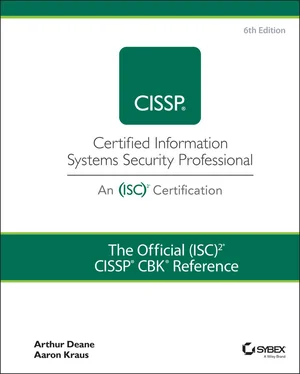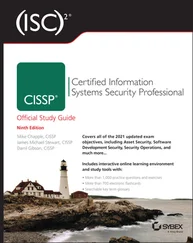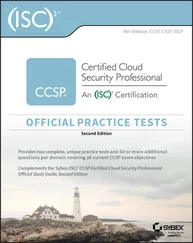Logical security aspects of SecOps include running and maintaining a security operations center (SOC), which is becoming an increasingly crucial part of a security program. The SOC centralizes information like threat intelligence, incident response, and security alerts, permitting information sharing, more efficient response, and oversight for the security program and functions. Planning for and exercising crucial business plans like business continuity and disaster recovery (BCDR) are also an important element of SecOps.
SecOps also encompasses important physical security concepts like facility design and environmental controls, which are often completely new concepts for security practitioners who have experience in cybersecurity or information technology (IT). However, the physical security of information systems and the data they contain is an important element of maintaining all aspects of security. In some cases, physical limitations like existing or shared buildings are drivers for additional logical controls to compensate for potential unauthorized physical access.
Software Development Security
Information systems rely on software, so proper security is essential for the tools and processes used to develop software. This includes both custom-built software as well as purchased system components that are integrated into information systems. Cloud computing is changing the paradigm of software development, so this domain also includes security requirements for computing resources that are consumed as a service like software as a service (SaaS), platform as a service (PaaS), and emerging architectures like containerization and microservices.
Software can be both a target for attackers and the attack vector. The increasingly complex software environment makes use of open-source software, prebuilt modules and libraries, and distributed applications to provide greater speed for developers and functionality for users. These business advantages, however, introduce risks like the potential for untrustworthy third-party code to be included in an application or attackers targeting remote access features.
Adequate security in the software development lifecycle (SDLC) requires a combined approach addressing people, process, and technology. This domain revisits the critical personnel security concept of training, with a specific focus on developer security training. Well-documented software development methodologies, guidelines, and procedures are essential process controls covered in the domain. Technology controls encompassing both the software development environment and software security testing are presented, as well as testing approaches for application security (AppSec) including static and dynamic testing.
DOMAIN 1 Security and Risk Management
DOMAIN 1 OF THECISSP Common Body of Knowledge (CBK) covers the foundational topics of building and managing a risk-based information security program. This domain covers a wide variety of concepts upon which the remainder of the CBK builds.
Before diving into the heart of security and risk management concepts, this chapter begins with coverage of professional ethics and how they apply in the field of information security. Understanding your responsibilities as a security professional is equally as important as knowing how to apply the security concepts. We then move on to topics related to understanding your organization's mission, strategy, goals, and business objectives, and evaluating how to properly satisfy your organization's business needs securely.
Understanding risk management, and how its concepts apply to information security, is one of the most important things you should take away from this chapter. We describe risk management concepts and explain how to apply them within your organization's security program. In addition, understanding relevant legal, regulatory, and compliance requirements is a critical component of every information security program. Domain 1 includes coverage of concepts such as cybercrimes and data breaches, import/export controls, and requirements for conducting various types of investigations.
This chapter introduces the human element of security and includes coverage of methods for educating your organization's employees on key security concepts. We cover the structure of a security awareness program and discuss how to evaluate the effectiveness of your education and training methods.
UNDERSTAND, ADHERE TO, AND PROMOTE PROFESSIONAL ETHICS
Understanding and following a strict code of ethics should be a top priority for any security professional. As a CISSP (or any information security professional who is certified by (ISC) 2), you are required to understand and fully commit to supporting the (ISC) 2Code of Ethics. Any (ISC) 2member who knowingly violates the (ISC) 2Code of Ethics will be subject to peer review and potential penalties, which may include revocation of the member's (ISC) 2certification(s).
(ISC) 2Code of Professional Ethics
The (ISC) 2Code of Ethics Preamble is as follows:
The safety and welfare of society and the common good, duty to our principals, and to each other, requires that we adhere, and be seen to adhere, to the highest ethical standards of behavior.
Therefore, strict adherence to this Code of Ethics is a condition of certification.
In short, the Code of Ethics Preamble states that it is required that every CISSP certified member not only follows the Code of Ethics but must be visibly seen as following the Code of Ethics. Even the perception of impropriety or ethical deviation may bring into question a member's standing. As such, CISSP certified members must serve as visible ethical leaders within their organizations and industry, at all times.
The (ISC) 2Code of Ethics includes four canons that are intended to serve as high-level guidelines to augment, not replace, members' professional judgment. The (ISC) 2Code of Ethics Canons are as follows:
Canon I: Protect society, the common good, necessary public trust and confidence, and the infrastructure.
Canon II: Act honorably, honestly, justly, responsibly, and legally.
Canon III: Provide diligent and competent service to principals.
Canon IV: Advance and protect the profession.
Adhering to and promoting the (ISC) 2Code of Ethics not only includes being mindful of your own professional behaviors, but also being aware of your peers' behaviors. (ISC) 2requires that any member who observes another member breaching the Code of Ethics follow the published ethics complaint procedure. Failure to do so may be considered breach of Canon IV. Additional information on the (ISC) 2Code of Ethics and the ethics complaint procedures can be found at www.isc2.org/Ethics.
Organizational Code of Ethics
In addition to the (ISC) 2Code of Ethics, as an information security professional, you must be aware of any code of ethics that you are required to uphold by your employer or industry. Similar to the (ISC) 2Code of Ethics, these other organizational codes of ethics should not be considered replacements for sound judgment and moral behavior. As a CISSP, you are a leader within your organization. As such, you should lead by example in adhering to your organization's Code of Ethics.
 Ethics and the Internet
Ethics and the Internet
In January 1989, right around the dawn of the internet, the Internet Activities Board (IAB) released a memo titled “Ethics and the Internet” (RFC 1087) as a statement of policy concerning ethical use of the internet. Although the memo is ancient by technology standards, the principles within it are still relevant today; as a CISSP, you should understand and adhere to these principles.
Читать дальше

 Ethics and the Internet
Ethics and the Internet










